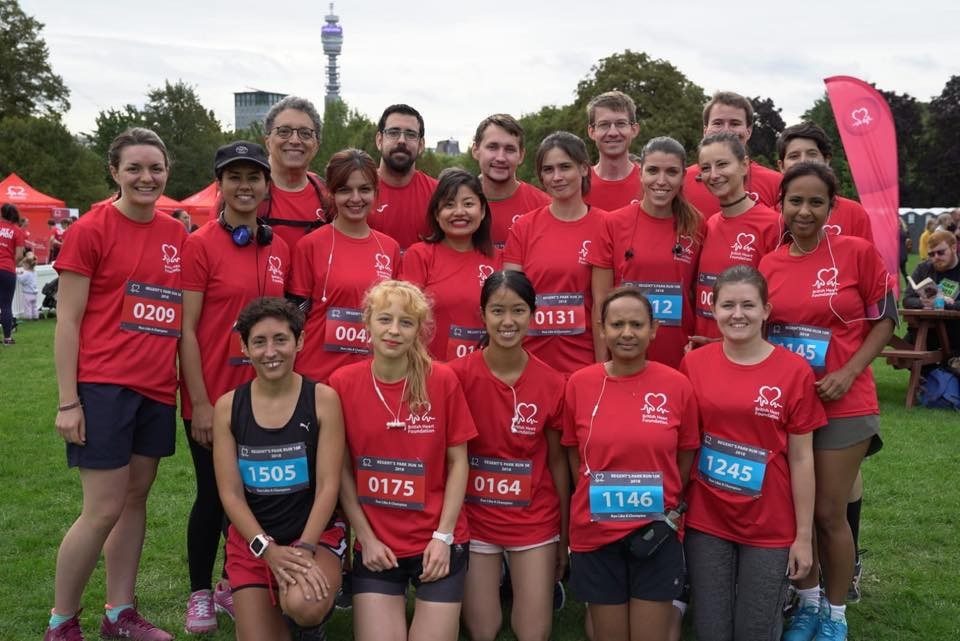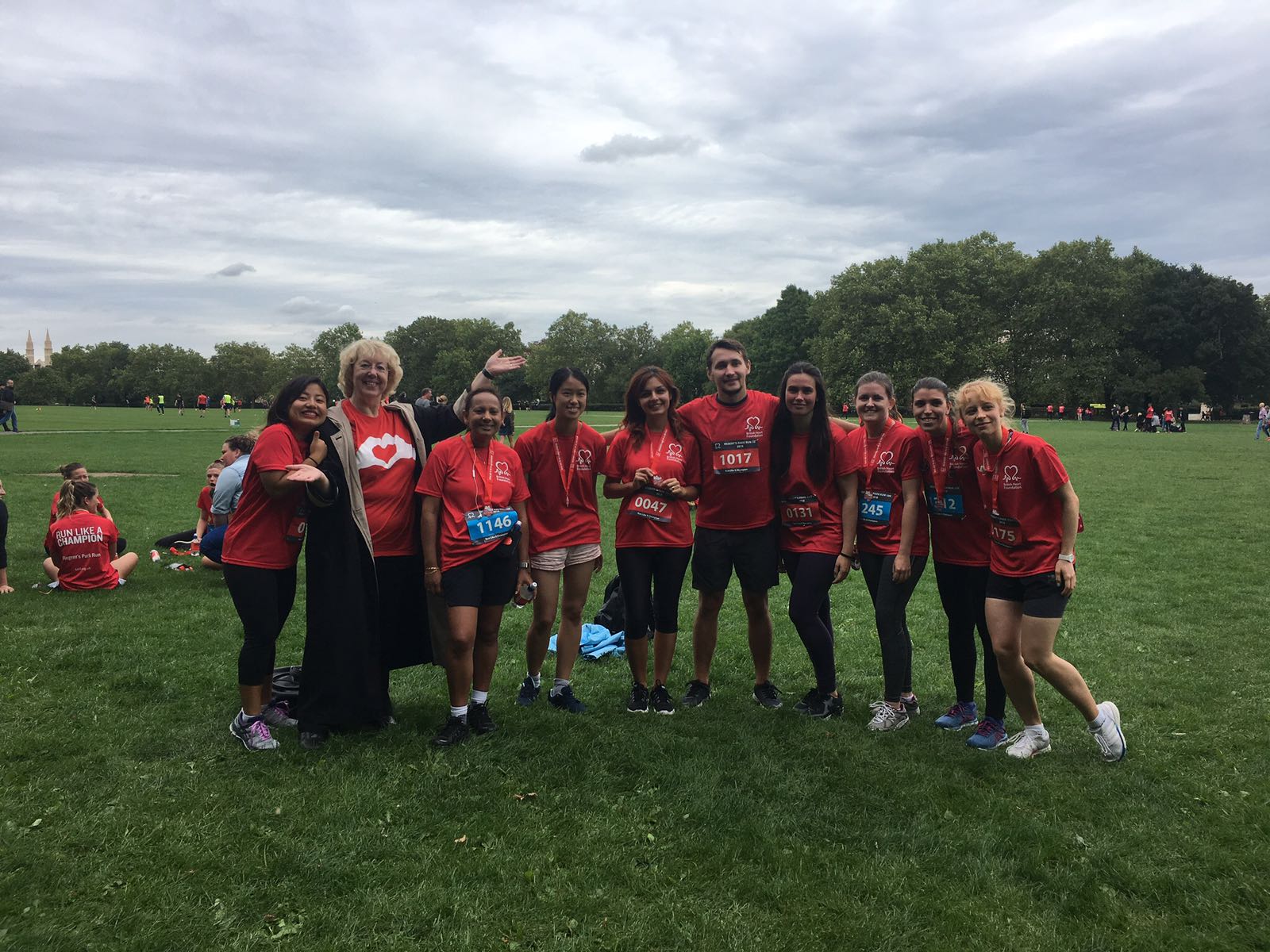
The BHF hold many running events throughout the year and Regents Park is one of the more popular venues for London. The Imperial College ICTEM Team, which included 21 ICTEM/BHF funded members and 9 external members (family/friends), successfully completed the BHF Regents Park Run on the 8th September. We ran as a team to raise vital funds for the British Heart Foundation.
It was Prof Michael Schneider suggestion to spread word about this run at the start of the year, and we were pleasantly surprised to see so many were interested in getting involved. By May, we’d assembled a large and varied team of runners, which included clinicians, professors, PhD students, professional and technical staff.
Run Day
The day itself started off a little chilly but gathered at Regents Park, ready to run for the BHF. By 10.30am, the BHF stalls and information stands were surrounded by runners in red; faces were being painted, number patches were being hung on t-shirts with safety pins, dedication slips were being written out (decorated with kisses, flowers and hearts) and photos were taken to memorialise the occasion. At 11am, after a 15 minute warm up session, a wave of runners in red set off from the start line.
The run was broken up into two legs – 5KM and 10KM. We ran on tarmac, along a scenic route around the park. There were marks along the route to indicate the number of kilometres covered and mini water bottles were being handed out ¾ into the first 5KM.
We also ran past playing fields, where we were met with encouraging cheers from children playing their weekend football games and their side line bound parents. Elderly citizens on benches cheered us on as they squinted to read the signs on the back of our bright red t-shirts that read “run like a champion”.
And run like a champion we did! We were all able to finish our respective distances 12.30pm. Although our muscles ached after the run, we were spurred on the cheering and enthusiasm of our colleagues, family and friends at the finish line, making the experience all the more fun for all.
Fundraising
We started out with an initial target of raising £2,000 on our JustGiving team page. With our joint efforts, we were able to raise close to £2,000 by the morning of the run and were able to go the extra mile by raising a further £1,500 after the run.
Another push to the addition to this great team effort was that one of the team members, Dr Jij Chow, who had originally planned to run with us at Regents Park decided to take up an excellent challenge of running 100KM from London to Cambridge. He was able to successfully complete this run in 14 hours 45 minutes, giving our fundraising page a further boost.
Thank you
Lastly, we just want to say thank you to all those who donated towards the fundraiser; thank you to our colleagues, friends and family who came to cheer us on the day!
If you’re interested in getting involved in future BHF events, please visit the BHF Runs Webpage.

